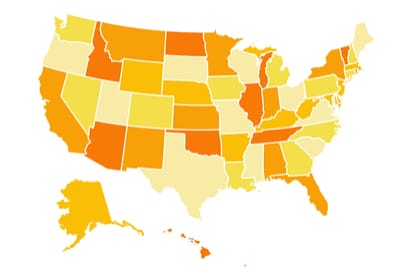
The aim of student teaching is to prepare teacher candidates to become full-time teachers with their own classrooms. The idea that a student teacher shadows a mentor teacher before taking over their classroom has been the chosen method for several decades. However, many people question whether this is the best method. Co-teaching is another popular method that people have considered. With co-teaching as a best practice in student teaching, here are some things that teacher candidates should know
What is Co-Teaching?
Before we begin, it might be helpful to define what co-teaching is exactly. Co-teaching is the idea that the teacher candidate and cooperating teacher collaborate in the classroom. Rather than shadow the cooperating teacher before taking over the classroom, the teacher candidate works with the cooperating teacher from Day 1. They work as a partnership, collaborating on lesson planning and delivery.
There are lots of benefits to co-teaching, such as:
- an enhanced experience for students
- the ability to draw on the strengths of both the cooperating teacher and teacher candidate
- an increased positive working relationship between the cooperating teacher and the teacher candidate
Let’s look into some of the ways that this is demonstrated in the classroom.
Preparation
Before the teacher candidate’s first day, he or she attends training and workshops with the cooperating teacher. These courses help clarify their roles, teach co-teaching strategies, and allow opportunities to practice collaboration.
The teacher candidate and cooperating teacher should develop a good rapport with one another. The students can tell if there is a good working relationship or not, so it’s important to connect with one another and convey their partnership right from the get-go.
Planning
In student teaching, the student teacher completes all lesson planning. Then, he or she has the cooperating teacher review it. In co-teaching, however, the teacher candidate and cooperating teacher plan together. They discuss what they will do in the lesson based on their strengths and weaknesses to seamlessly deliver the material together. Of course, the teacher candidate will complete detailed lesson planning on their own still. As the time goes on, the teacher candidate will continue to take on more responsibility in planning. However, the cooperating teacher will continue to act as co-teacher.
Leadership
Throughout the co-teaching experience, the teacher candidate will continue to take on more responsibility, especially in the decision-making process. This helps build the teacher candidate’s confidence to take on their own classroom.
Transparency
The cooperating teacher is first and foremost a mentor. He or she should model effective teaching skills, instructional strategies, and classroom management techniques. It’s helpful to discuss the reasons for doing things a particular way. This leads to deeper understanding for the teacher candidate. Then, the teacher candidate should practice these skills and techniques under the cooperating teacher’s supervision.
The co-teaching model continues to be accepted by universities across the nation. If this is something that you’re interested in doing, speak to your teacher education department. You could also find a college or university that supports co-teaching as a best practice in student teaching.





Leave a Reply